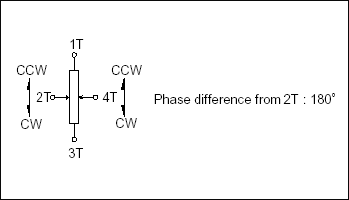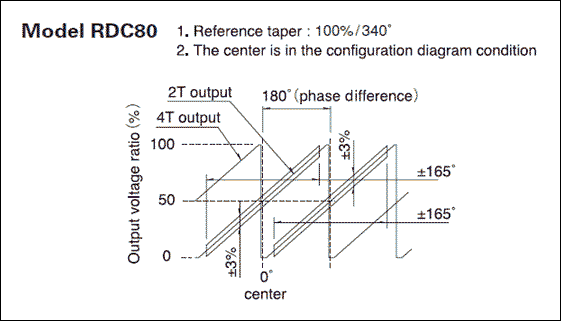Part number
RDC803101A
Through Shaft Type (360° Rotation) RDC80 Series
Basic information


- Control part orientation
- Vertical
- Mounting method
- Reflow type
- Total resistance
- 10kΩ
- Effective electrical range
-
340゜ (1-phase)
360゜ (2-phase) - Linearity guarantee range
-
330゜ (1-phase)
360゜ (2-phase) - Linearity
- ±3%
- Hollow shaft variation
- φ4.05
- Operating life
- 20,000 cycles
- Rated voltage
- 5V DC
- Dimensions
- 16×15×3mm
Specifications
- Operating temperature range
- -40℃ to +120℃
- Mechanical performance
- Rotational torque
- 10mN·m max.
- Electrical performance
- Total resistance tolerance
- ±30%
- Rated voltage
- 5V DC
- Environmental test
- Cold
- -40℃ 168h
- Dry heat
- 120℃ 168h
- Damp heat
- 60°C, 90 to 95%RH 96h
- Minimum order unit(pcs.)
- Japan
- 1,600
- Export
- 1,600
Land Dimensions
Viewed from mounting side
Circuit Diagram
Soldering Conditions
Example of Reflow Soldering Condition

| A | B | C | D | E | F | G | H | I | No. of reflows |
|---|---|---|---|---|---|---|---|---|---|
| 250℃ | - | 180℃ | 150℃ | 90±30s | - | 10±1s | - | - | 1 time |
Reference for Hand Soldering
- Tip temperature
- 350±5℃
- Soldering time
- 3(+1, 0)s
Notes are common to this series/models
- This site catalog shows only outline specifications. When using the products, please obtain formal specifications for supply.
- Please place purchase orders for taping products per minimum package units(1 reel or a case). Please see taping specifications.
- Ask us for the export packaging unit.
- This products can be used in vehicles.
Although these products are designed to perform over a wide operating temperature range, please ensure that you receive and read the formal delivery specifications before use.
Cautions
- Use of Chemicals
- The sensors make use of synthetic resins, therefore avoid use in environments where there is a strong presence of gases from chemicals such as ammonia, amines, alkaline aqueous solutions, aromatic hydrocarbons, ketones, esters and halogenated hydrocarbons.
- Measures to Deal with Noise Problems
- While data is being received from the sensor, on rare occasions, penetrating external noise may cause interference with the outputs. To minimize the probability of this phenomenon pay attention to the following when you program the relevant software: receiving of data should always be repeated a number of times to ensure that you obtain a mean value. Have the system determine when/how to invalidate any data received in error. When doubt occurs let the system receive the subject data again and reconfirm that you have eliminated the anomaly.
- Soldering
- Avoid wiring and soldering that causes the solder to seep through to the top of the PC board (as illustrated). This can lead to a contact failure in the terminal section. If solder seepage is unavoidable, please consult with us.

Analog Output Contact Type
- Connection Impedance
- Resistive position sensors are constructed in a way that contact resistance (R1 below) occurs within the sensor. To reduce the effect of contact resistance (R1), set the impedance within the circuit connected to the output terminal to greater than 1MΩ.

- Dew Condensation
- Avoid using the sensor where dew or water vapor might be caused to condense on the surface of the resistor - deterioration of insulation or shorting may occur.
Measurement and Test Methods
Resistive Position Sensor
- Total Resistance
- Unless otherwise specified, total resistance is the resistance measured between resistor terminals 1 and 3.
- Rated Voltage
- The rated voltage corresponding to the rated power shall be determined by the following equation. When the resulting rated voltage exceeds the maximum operating voltage of a specific resistor, the maximum operating voltage shall be taken as the rated voltage.




